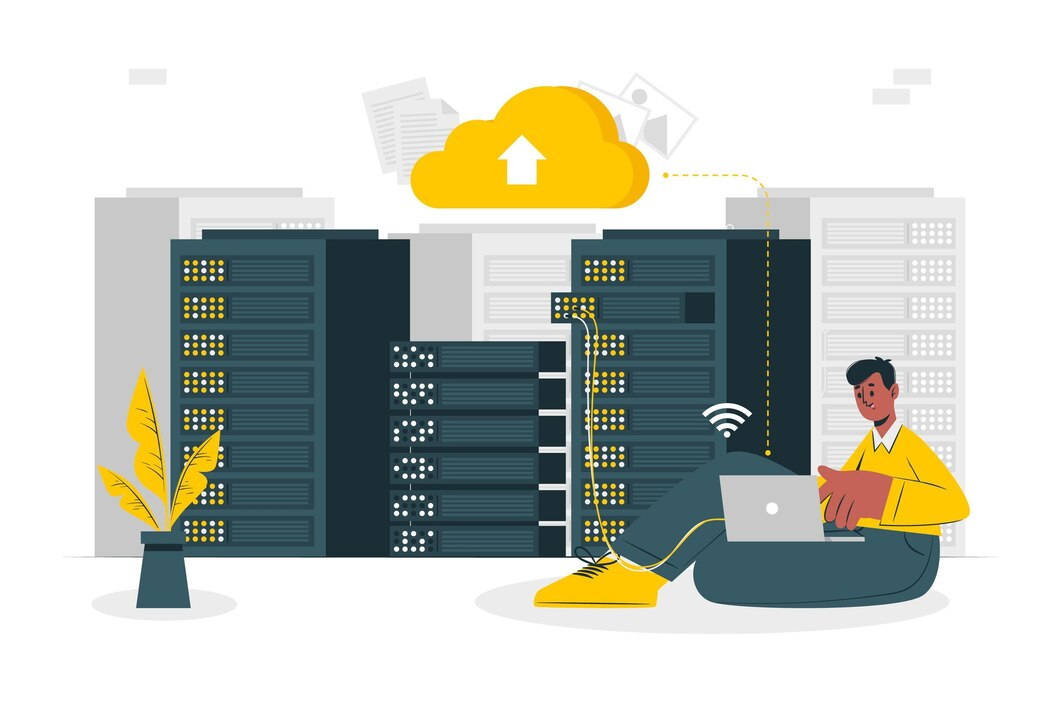Leased Line vs DSL (Digital Subscriber Line): Understanding Differences
-
January 23, 2025
-
7 min read

How do network performance and operational demands influence the choice between a leased line and DSL in business networking?
As businesses increasingly use cloud technologies and real-time data analytics, their network foundation becomes crucial for maintaining flexibility and speed. When comparing leased line with DSL, you are essentially comparing two distinct networking solutions.
A leased line offers dedicated bandwidth, which means the speed for uploading and downloading data is the same. This is ideal for businesses that handle large amounts of data in both directions, such as those using cloud services. In contrast, DSL, which operates over older copper lines, provides less bandwidth and is more cost-effective, making it suitable for smaller businesses.
This guide helps you understand how each connectivity option aligns with different technological strategies and business scales in the push for digital transformation.
Comparing Connectivity Solutions: Leased Line vs DSL
In enterprise networking, the choice between a leased line and DSL can significantly impact the operational capacity and efficiency of a business.
Selecting the right connectivity solution is pivotal across different sectors. Each industry’s connectivity needs are significantly influenced by factors such as data sensitivity, reliance on real-time operations, and growth prospects. The choice between leased lines and DSL is largely governed by these needs. Here’s an in-depth comparison of leased lines with DSL connections in various industrial sectors:
1. Financial Services
Leased Lines:
- Critical Reliability: With financial transactions requiring constant uptime, leased lines offer up to 99.999% reliability, crucial for trading floors, banks, and insurance companies.
- Superior Security: Leased lines ensure the protection of sensitive financial data with robust encryption and dedicated circuits, mitigating risks of data breaches.
DSL:
- Cost-effective but Risky: Although cheaper, the shared nature of DSL might expose financial services to security vulnerabilities, which is less desirable for high-stakes financial transactions.
- Inconsistent Performance: The variable speed and downtime can disrupt customer services and real-time trading activities, affecting client trust and operational efficiency.
2. Healthcare
Leased Lines:
- Support for Critical Applications: Leased lines enable reliable telehealth sessions and large medical file transfers, essential in modern healthcare settings.
- Compliance and Security: Leased lines meet stringent healthcare regulations like HIPAA by providing secure and private connections.
DSL:
- Potential for Disruption: Slower speeds and downtime could compromise patient care quality during telehealth sessions or critical data transfers.
- Security Concerns: The shared connection increases the risk of privacy breaches, which is a significant concern in patient data handling.
3. Retail
Leased Lines:
- Enhanced Customer Experience: Leased lines provide the bandwidth necessary for high-definition content streaming, online POS systems, and inventory databases, crucial during peak shopping periods.
- Scalability: Quickly scales up to meet demand surges during sales or promotional events, ensuring smooth customer transactions.
DSL:
- Limited Growth Support: DSL may hinder sales during peak times because of bandwidth sharing with other businesses or consumers.
- Unpredictable Uptime: Can result in lost sales and customer dissatisfaction during internet outages.
4. Education
Leased Lines:
- Stable E-learning Environments: Supports interactive online courses and consistent access to educational resources, crucial for student satisfaction and success.
- Future-proof Infrastructure: Facilitates the integration of advanced technologies like virtual and augmented reality in education.
DSL:
- Limited Online Access: Fluctuations in speed can disrupt online learning experiences, affecting lectures, exams, and student engagement.
- Challenges in Scalability: Struggles to support a growing number of digital users or resource-intensive applications without significant infrastructure upgrades.
5. Manufacturing
Leased Lines:
- IoT and Automation: Offers the low-latency and high-speed internet required for IoT devices and automated systems, critical for efficient, real-time manufacturing operations.
- Adaptability: Adjusts bandwidth as manufacturing processes evolve and expand, supporting innovations like machine learning and predictive maintenance.
DSL:
- Operational Delays: Slower speeds and less reliable connections could lead to production delays and inefficiencies, detrimental in a fast-paced manufacturing environment.
- Limited Industrial Application: May not adequately support the bandwidth-intensive and latency-sensitive applications needed in modern manufacturing settings.
As businesses look toward future-proofing their operations, considering leased line vs broadband solutions is essential for those requiring reliable, high-speed internet access to support real-time data transfer and cloud applications. This consideration is crucial for aligning network capabilities with strategic business goals.
The Verdict: When to Choose Leased Lines vs. DSL?
Choosing between a leased line and DSL involves carefully evaluating your organisation’s specific needs. Here is a detailed comparison table for the connectivity options in various industries:
| Industry | Connectivity Solution | Benefits | Drawbacks |
| Financial Services | Leased Lines | – Critical Reliability (99.999% uptime) – Superior Security (robust encryption, dedicated circuits) |
N/A |
| DSL | – Cost-effective | – Risky (security vulnerabilities) – Inconsistent Performance (variable speed and downtime) |
|
| Healthcare | Leased Lines | – Supports Critical Applications (telehealth, large file transfers) – Compliance and Security (meets regulations like HIPAA) |
N/A |
| DSL | – Cost-effective | – Potential for Disruption (slower speeds, downtime) – Security Concerns (privacy breaches) |
|
| Retail | Leased Lines | – Enhanced Customer Experience (supports HD content, online POS) – Scalability (meets demand surges) |
N/A |
| DSL | – Cost-effective | – Limited Growth Support – Unpredictable Uptime |
|
| Education | Leased Lines | – Stable E-learning Environments – Future-proof Infrastructure (supports VR/AR) |
N/A |
| DSL | – Cost-effective | – Limited Online Access – Challenges in Scalability |
|
| Manufacturing | Leased Lines | – IoT and Automation (low-latency, high-speed) – Adaptability (adjusts bandwidth as needed) |
N/A |
| DSL | – Cost-effective | – Operational Delays (slower speeds) – Limited Industrial Application |
This table illustrates how leased lines typically offer significant advantages in reliability, security, and performance across diverse sectors, making them suitable for industries that depend heavily on real-time operations and have critical data sensitivity needs.
Meanwhile, DSL, while more cost-effective, may pose challenges in terms of performance consistency, security, and scalability, which could impact operational efficiency in sensitive environments.
To cut to the chase, if a leased line solution aligns with your business needs for reliable, high-capacity internet access, consider Airtel’s Internet Leased Line (ILL) as a premier choice. Airtel ILL offers dedicated connectivity with symmetric speeds capable of reaching up to 100 Gbps, ensuring robust support for high-demand applications.
It features a 99.5% uptime guarantee, complemented by proactive monitoring and DDoS protection to safeguard your operations. Additionally, the service offers burstable bandwidth and scalable solutions, providing flexibility to accommodate your business’s evolving requirements efficiently.
This makes Airtel ILL a fitting solution for businesses seeking a dependable and scalable internet service.
Final Assessment: Choosing Between Leased Lines and DSL
In evaluating leased lines vs. DSL, the choice clearly hinges on specific business requirements. Leased lines are indispensable for enterprises that depend on high-speed, reliable office internet connectivity to support critical operations such as real-time data processing and extensive cloud activities. They offer symmetric speeds and dedicated leased line bandwidth, ensuring performance stability and security. For companies with less intensive internet needs and budget constraints, DSL may be adequate.
For businesses needing reliable, scalable, and secure internet access, Airtel’s Internet Leased Line (ILL) stands out as a top-tier solution. It combines high-speed connectivity with comprehensive service agreements to meet the demands of dynamic business environments, making Airtel ILL an excellent choice for those prioritising quality and reliability in their network solutions.
Choose dedicated internet to support critical applications and seamless data transfer.
 Share
Share









